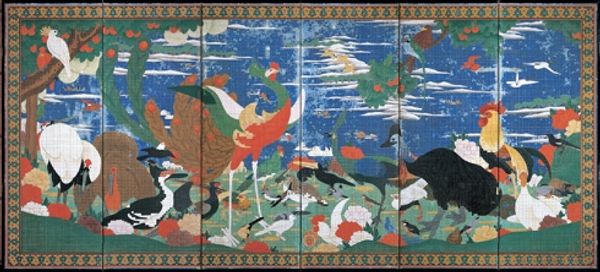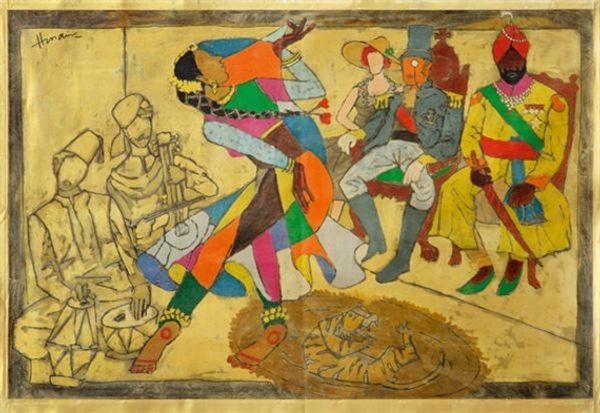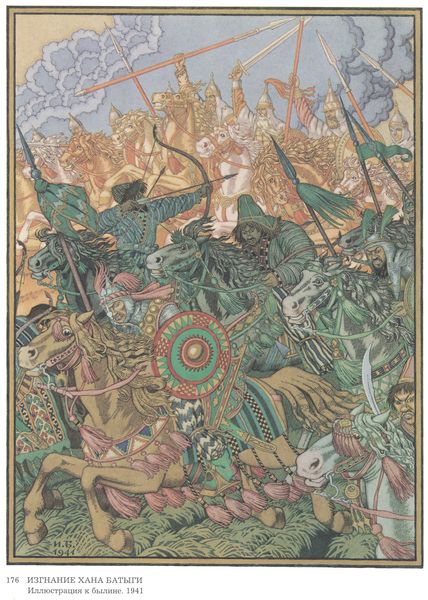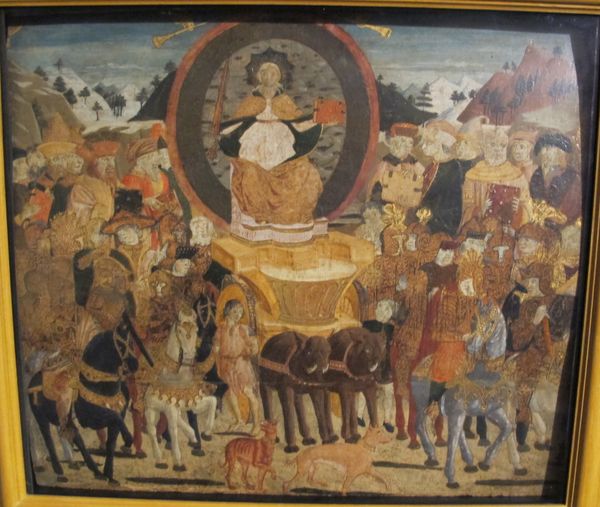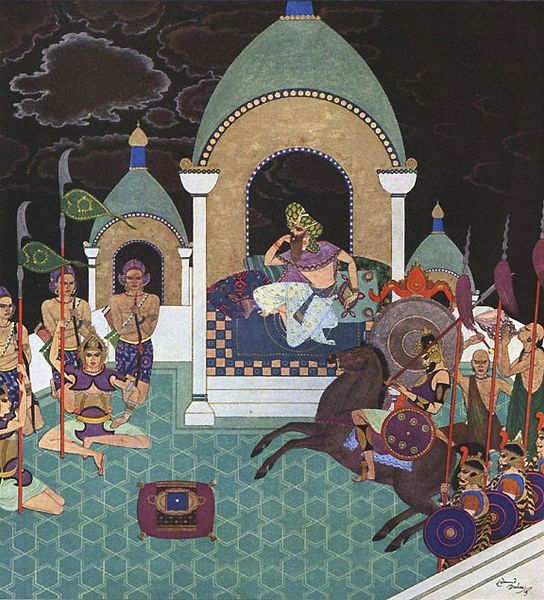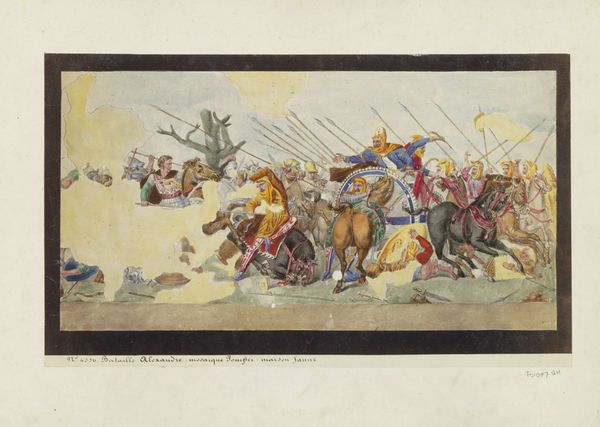
painting, wood
#
tree
#
medieval
#
narrative-art
#
animal
#
painting
#
landscape
#
figuration
#
forest
#
wood
Dimensions: 66 x 105.5 cm
Copyright: Public domain
Curator: Ah, "Deer Stalking" by Ivan Bilibin, painted in 1931. What strikes you first? Editor: The surface quality is quite beautiful. The colors—rich browns and autumnal golds—feel inherent to the material itself. I presume this is rendered with wood or a similar material because it’s less about visual realism and more about the composition. It has a wonderful stylized flatness. Curator: Indeed. Bilibin's works often tap into visual memories, bridging past eras and familiar scenes through accessible symbols and conventions. Notice how he portrays this hunt as if lifted from the pages of a medieval tapestry. There's that sense of frozen narrative, like figures captured in an eternal moment. Editor: The figures are rendered with such crisp delineation; they nearly have a graphic quality! Even the framing motif seems to play into that flatness. It’s interesting how he orchestrates depth via these layering effects, juxtaposing these flat surfaces, a quality common to this type of work. Curator: Absolutely, that aesthetic creates a dreamlike remove. Bilibin skillfully employed that effect to summon the aura of the medieval. Editor: In terms of how visual information and symbolic encoding is being translated into a flattened visual plain, I do think Bilibin created a rather fascinating dialogue between abstraction and naturalism! It’s something that brings an uncanny aesthetic feel to a narrative painting. Curator: Perhaps it reflects something deeper about the continuity of certain values, too—the noble pursuit, the majesty of the hunt. These motifs recur across centuries in collective memories. And, with this visual code, he enables a more enduring cultural resonance. Editor: It's as if the painting itself strives to become an artifact, successfully transporting the viewer to another time. This close study allows us to perceive a lot about culture at that time. Curator: Very insightful! I find myself reconsidering the weight of artistic continuity today, after engaging in this study. Editor: Likewise. Examining Bilibin’s methods truly clarified how form can construct, or rather, reflect, shared history.
Comments
No comments
Be the first to comment and join the conversation on the ultimate creative platform.

